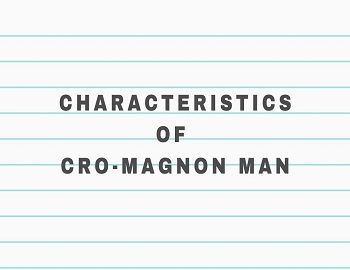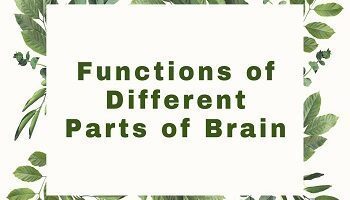Cro-Magnon Man:
M. Louis Lartet in 1868 discovered fine skeletons from a cave Cro-Magnon in Les Eyzies, France belonging to two adult men, one woman, an infant and an old man. Its age has been estimated to be 30-40 thousand years (late Pleistocene). Associated finds belong to an Aurignacian culture of upper palaeolithic consisting of bone and stone tools, cane-paintings, sculptures, stone statues of female figures etc. The animal bones belong to mammoths, cave bear, woolly rhinoceros etc.
Characteristics of Cro-Magnon Man:
- The skull is very large and massive.
- Skull is very long (20.3 Cm) in relation to its breadth (15.0 Cm) and thus the skull is dolichocephalic.
- The vault is high.
- The Cranial Capacity is estimated at 1660 c.c. by Keith and 1590 c.c. by Boule.
- The forehead is broad and moderately high.
- Supraorbital ridges are low and wide.
- The occiput is projecting notably and it is flattened at the parietal occipital region.
- The face is very broad, short and flat.
- The orbits are rectangular in form.
- The zygomatic region is strong, large and prominent.
- The nose is long and narrow-leptorrhine.
- The nasal bones are high.
- The maxillary regions show marked prognathism.
- The palate is shallow and narrow.
- The lower jaw is strong and not very massive.
- The ascending ramii are not very wide.
- The sigmoid notch is fairly deep.
- A well-marked chin is present.
- The femur, which is platymeric is strongly bowed out and it possesses a well-developed linea aspera.
- The tibia is platynemic, that is, flat from side to side.
- The long bones suggest an athletic physique with strong muscles and tall stature.
- Height is estimated at 168.4 Cm.
- The leg is long compared to the thigh and the forearm is long compared to the arm.
- The pelvis of females indicated the birth of less mature babies and thus longer socialization.
- Culturally, these people were much advanced than the earlier forms. Their tool kit included more new devices- the bow and arrow, complex bone-tools, methods of food storage, improved hearths, clothing, larger dwelling. Faunal remains indicate planned hunting.
- Burial was much elaborate with Cro-Magnon people. Graves are often associated with goods that indicate changes in the belief system and the existence of social class.
- Cane-paintings are elaborate and they encode information about hunting, critical life transition such as puberty and other belief systems.
Evolutionary possibilities of Cro-Magnon is unclear. Fossils similar to it have been discovered from Border Cave, River Klasies from Africa and Qafzeh and Skhul from South-West Asia dating 0.1 million years ago.
Cro-Magnon may have had some inter-relationship with these African ancestors with which it shared genes in the formation of modern humans.









Comments (No)